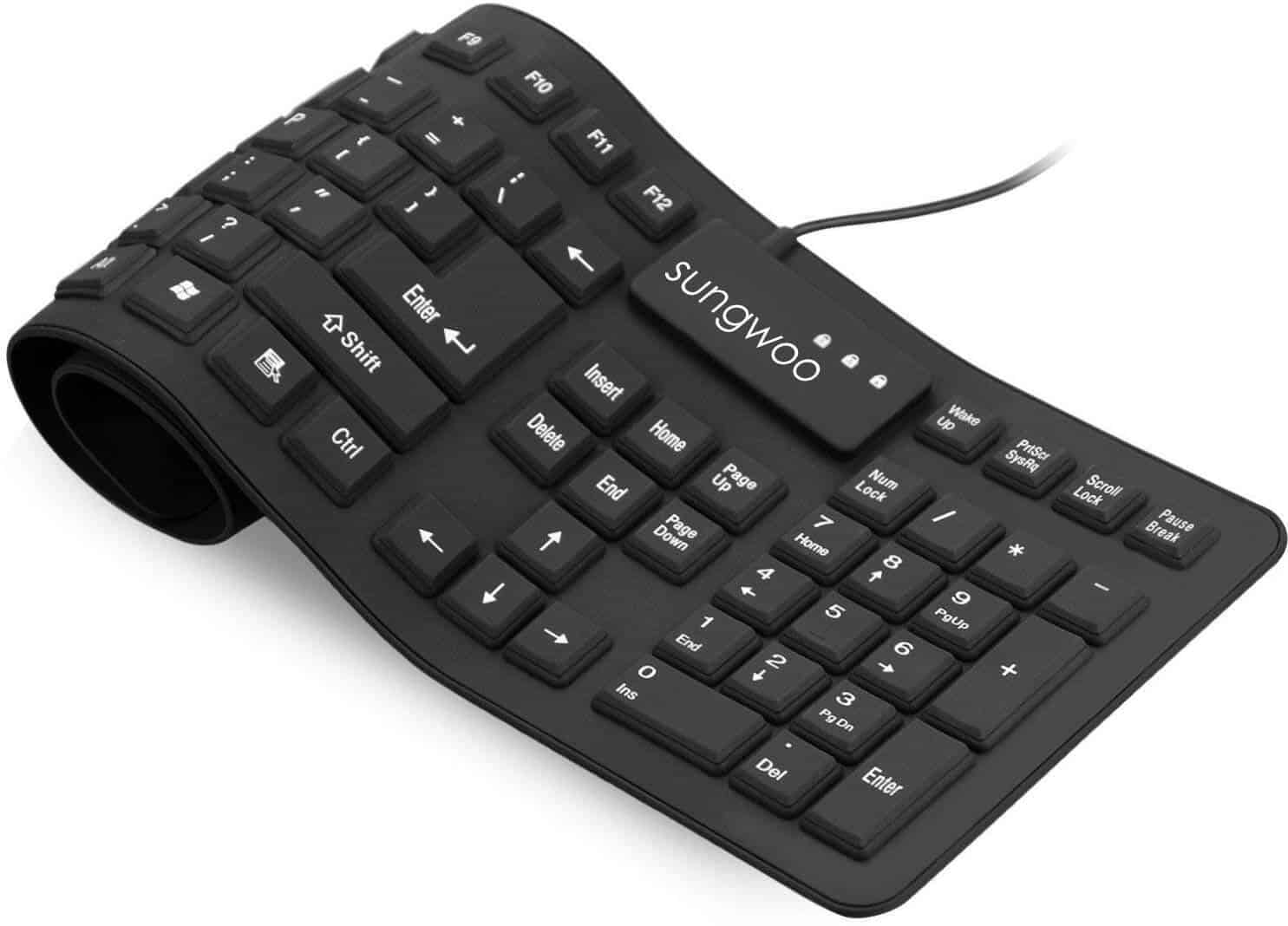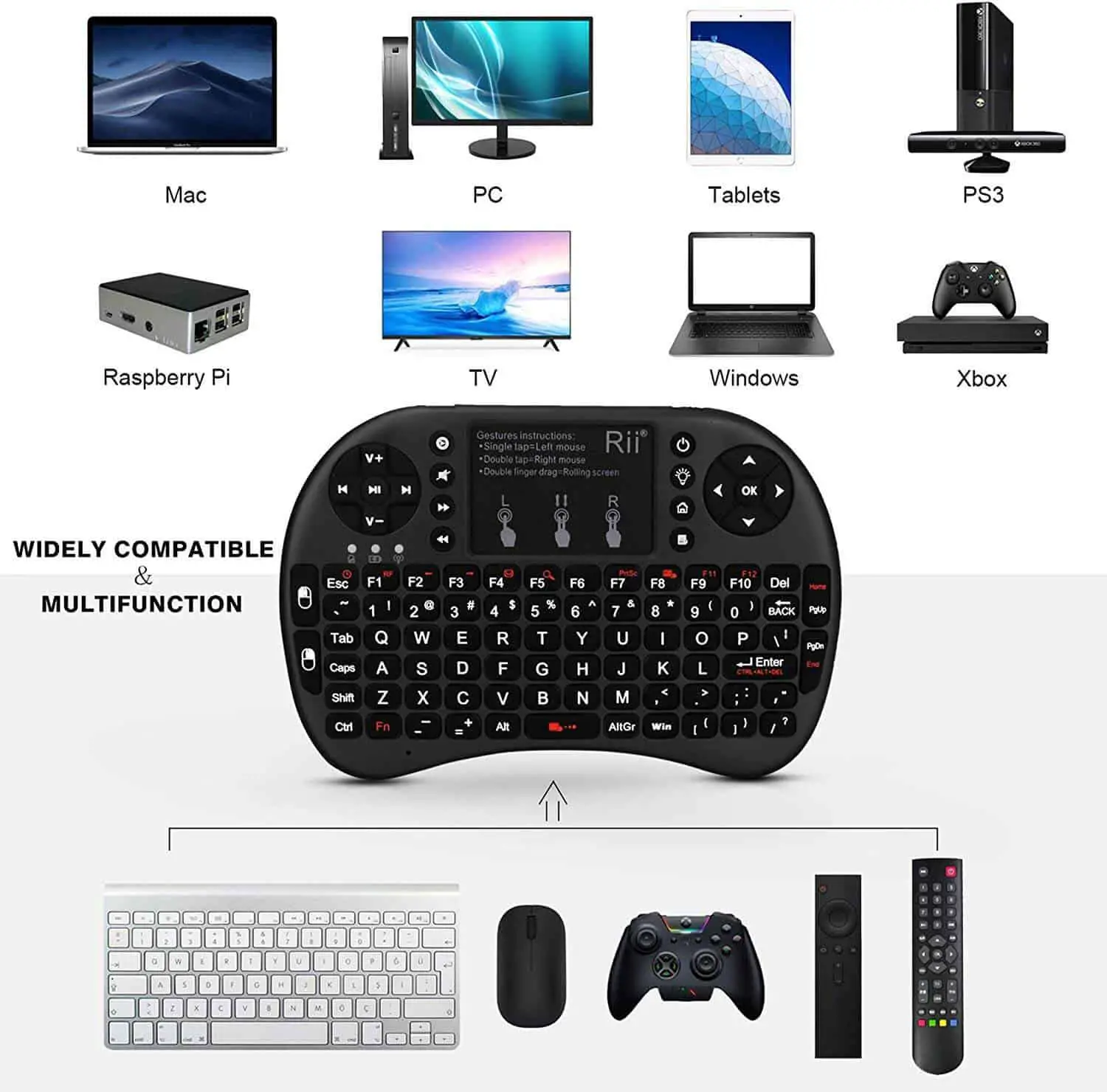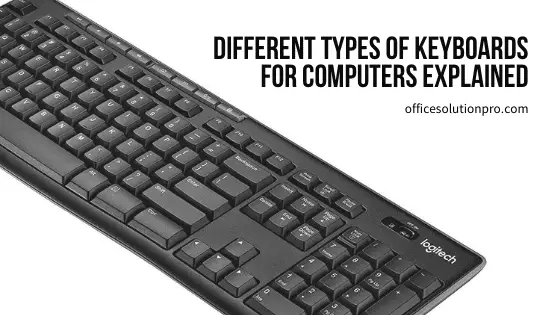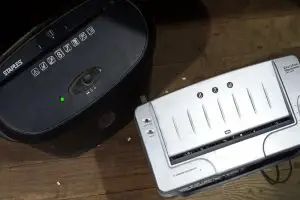Different types of keyboards for computers explained: The computer keyboard is a device that allows a person to input text using keys representing the alphabet, numbers, and special symbols. These devices come in different shapes and sizes, all of which have their own advantages and disadvantages.
There are different strokes for different folks. Computer keyboards have evolved over the years and are not the plain QWERTY keyboards of the past. These computer devices have become specialized for a variety of reasons and purposes.
At Office Solution Pro, we are passionate about Ergonomics! Our readers support the page. If you click on a link, we may earn a small commission at no cost to you. We hope you love the products we recommend as much as we do!
Whether you have physical problems associated with using a keyboard or have a particular interest in computer gaming, there are different styles, some specifically designed to suit your needs. Get to know the different types of keyboards for computers in our list to find out which one is best for you.
The Different Types of Computer Keyboards: How to Choose the Right One
1. Mechanical Keyboards
A mechanical keyboard is a keyboard built with spring-activated key switches. These switches are made of several moving parts and are the most common keyboard type available today.
Because of the high-quality construction of these switches, the best mechanical keyboards are what most users go for to get the best typing experience. They tend to be more durable than regular keyboards, especially membrane keyboards which are made with relatively cheaper materials.
2. Membrane Keyboards
A membrane keyboard is a computer keyboard without separate keys. These keyboards are the opposite of mechanical keyboards.
Most computer keyboards are easily recognizable because of the spaces between each individual key. The thicker body of the keyboard holding the mechanical or silicone dome switches are also very distinct.

Image originally uploaded to Wikipedia by Fourohfour.
Membrane keyboards, however, don’t have these spaces between the keys and are much thinner. The keys are part of a flat pressure-sensitive membrane that senses touch and sends the appropriate data to the computer.
Membrane keyboards don’t get a lot of use in homes and offices. The primary use of these flat, thin keyboards is on control panels, medical equipment, and some industrial equipment.
Some of the advantages of membrane keyboards are:
- Cheap to produce
- Resistant to dirt and liquids
- Some membrane keyboards can be flexible.
On the downside,
Membrane keyboard detractors cite several reasons these keyboards don’t find more use on home and business computers.
- Non-existent tactile feedback to the user
- No keyboard reference for touch typists
Many low-end computer keyboards are essentially membrane keyboards with some dome mechanism overlaying the membrane. This arrangement allows the user to have a more tactile feel and response from the keyboard. You might have a hard time learning faster typing with membrane keyboards.
PRO TIP: If you want to dig deeper into the comparison between mechanical and membrane keyboards, you can read more about it in our article right here. We broke down all the differences between the two, including their pros and cons, to help you decide which one is most suitable for you.
3. Flexible Keyboards
Flexible keyboards are, well, flexible. These are keyboards made from soft materials like silicone that allow the keyboard to be folded or rolled into a smaller size. Because of this, they are highly portable and is sought after by many small computer and tablets users who are constantly on the move.


Example of a waterproof foldable keyboard by Sungwoo.
Flexible keyboards offer many advantages including:
- Highly portable and convenient
- Water-resistant
- Almost silent operation
- Available in wireless or Bluetooth versions
There are some disadvantages, however, to flexible keyboards:
- Fast typists may outrun the keyboard and get missed keystrokes
- Many users don’t like the feel of a membrane keyboard
- Flexible keyboards tend to have a shorter lifespan than other types of keyboards
If you are an on-the-go individual who wants a keyboard to use together with your portable device, this flexible keyboard can be a good option for you.
4. Ergonomic Keyboards
Many professionals and computer workers suffer from wrist problems due to the constant pressure that using a keyboard inflicts on them. Ergonomic keyboards are designed to deal with these problems by allowing the user’s hands to stay relaxed.

Example of an ergonomic keyboard by Kinesis. Its contoured shape is designed to support your wrists.
The best ergonomic keyboards usually incorporate padded wrist support to reduce overexertion on the lower side of the hands. The advantages of ergonomic keyboards include:
- More comfortable work environment improves productivity
- Reduced stress on wrists and hands
- Helps relieve further injury to wrists and hands already affected
Ergonomic keyboard designs also have some possible problems to look out for.
- Users of ergonomic keyboards must learn the proper way to use the keyboard to gain the physical benefits.
- Some individuals may suffer other kinds of physical stress and damage from using ergonomic keyboards, such as elbow involved problems.
- Changing to an ergonomic keyboard may affect keyboard speed and accuracy
Changing to an ergonomic keyboard may prevent you from developing wrist problems caused by long stretches of work. Keep in mind, however, that ergonomic keyboards come in different styles, and not all may be right for your problem. A good orthopedist who specializes in proper hand positioning may be able to make a recommendation based on your needs.
5. Gaming Keyboards
A large number of users rely on their computers just to play games. Because of this, an entire segment of the computer industry is devoted to this market, and it’s no wonder that there is a specialized set of keyboards dedicated to hardcore gaming designed by gamers.

The Corsair K95 RGB PLATINUM Mechanical Gaming Keyboard is one of the favorite gaming keyboards.
Professional gamers look for several features in a gaming keyboard.
- Key rollover refers to the number of keystrokes a keyboard can “remember.” On standard keyboards, that is 1 or 2 keystrokes. Professional game players look for much higher rollover numbers. Most gaming keyboards have a keyboard rollover of 4 to 6 keyboard strokes.
- Programmable macro functions allow the game player to pre-program several keyboard combinations into one keypress. Pre-programming keystrokes allow faster operation of special keystroke sequences used during gameplay.
- Game players seem to prefer to play their games in a dark environment. Backlit keyboards are popular so that key orientation can be seen in dark rooms while playing the computer game.
Gaming keyboards do have some issues.
- Gaming keyboards tend to be more expensive than their standard counterparts.
- The macro programming on some gaming keyboards is difficult
You can, of course, use the standard QWERTY keyboard that came with your computer. But to take your gaming experience to the next level, you should look for the best gaming keyboard to add to your system.
6. Wireless Keyboards
Everything is wireless these days. Computer keyboards are no exception. Without realizing it, we are constantly exposed to wireless technology every day. This includes wireless computer keyboards that use three modern technologies to connect: infrared, 2.4 GHz Wi-Fi, and Bluetooth.

Most keyboards offer wireless technology, just like this Logitech keyboard.
Almost every style of computer keyboard in our list is available with wireless technology. One of the great features of wireless computer keyboards is the ability to connect to other devices, not just a computer. Smart TVs, smartphones, and most tablets will readily connect to a Bluetooth or WiFi keyboard for the added functionality of your device.
Wireless keyboards come in a varied number of types and styles. Therefore, it can be hard to choose the right one for your needs. These are the things you need to look for in the best wireless keyboards.
- How do you want to connect your keyboard? Will you use Bluetooth, 2.4 GHz Radio Frequency, or WiFi? Your choice depends a lot on what kind of device you want to connect to the wireless keyboard.
- What kind of key switches do you want? Key switches are the tiny devices under each key cap on the keyboard that signal when you press a key. Mechanical switches are the choice of heavy users and touch typists, but they can be very noisy. Cheaper keyboards use silicone dome switches. However, these cheaper switches don’t give as much tactile feedback as mechanical switches.
- What keyboard options do you want? Do you need a 10-key pad on the keyboard? What about a full set of function keys? Will you want to program macro functions on your keyboard? There is a range of options found on keyboards, even those that are wireless.
Wireless keyboards are convenient but don’t forget to consider a few things.
- All wireless keyboards need batteries that will need to be changed every once in a while.
- Some technologies have a limited range and can be sensitive to several kinds of interference.
If convenience and freedom from wires are attractive to you, then a wireless computer keyboard is the best option. Some models offer a mouse as part of the package that uses the same receiver to connect to your computer.
7. Multimedia Keyboards
If you enjoy your home theater but would like more functionality while eliminating the hassles of having multiple controllers to run your system, then you should consider a multimedia keyboard to enhance to the overall experience of your home theater.

A multimedia keyboard is designed to combine the controls of your devices into one.
Incorporating all the functions of several controllers into one keyboard can be technically challenging, however, the convenience of only needing to reach for one keyboard to control all your home theater devices is a great benefit to consider.
Features on multimedia that stand out are:
- Special controls for audio options grouped conveniently
- Controls for video options that allow user programming
- Programmable to interface with several devices
- Ability to easily browse the internet through your home theater system
You should check user feedback to watch out for issues such as:
- Hard to program macro keys and special keys
- Software driver issue compatibility with some operating systems
- The durability of some cheaper keyboards is an issue
Don’t be hesitant to consider adding a multimedia keyboard to your home theater system. You will find it more convenient, making your home theater experience more enjoyable.
8. Handheld Keyboards
There are those in the world who want to be outside the box—especially those who are heavily involved in computer gaming, as they are always looking for an advantage. Handheld computer keyboards were quickly adopted by professional gamers looking to gain even the slightest edge against their opponent.

This unique ergonomic one-handed keyboard may give gamers a slight advantage.
Most handheld keyboards are radical by design and don’t resemble a computer keyboard. Some are used with one hand, while others look more like a game box controller than a computer keyboard.
Some of the features found on handheld keyboards include:
- Unconventional keyboard layout that is far different than the standard QWERTY keyboard
- Highly ergonomic designs that allow users more functionality for some specialized uses
- Once the user learns the keyboard, keystrokes can be faster than with a conventional keyboard
As with anything else that goes outside the box, there are potential problems to look out for:
- Hard to learn to use and, once learned, may make going back to a standard keyboard almost impossible
- Some handheld keyboards require extensive programming to set up the key functions for specific applications
- These specialized keyboards get expensive
If you are a dedicated gamer or restricted to only using one hand for keyboard work, a handheld keyboard may be the answer to your needs.
9. Vertical Keyboards
Another highly specialized type is the vertical keyboard. This model is another take on the ergonomic structure designed to relieve stress on the user’s hands.
Vertical keyboards feature a three-dimensional concept. The keyboard splits into two halves, and each set of keys rises vertically, allowing the hands to lay on edge to address the keys rather than lay flat.

Example of the unique vertical keyboard by SafeType.
Manufacturers claim that vertical keyboards are the only design that encourages users to sit in a neutral position with their whole body. The neutral body position reduces strain on the back, neck, arms, wrists, and hands.
Users of vertical keyboard point to several advantages.
- Less stress on the shoulders, arms, and wrists
- A more natural posture for the hands and arms
- More body-friendly than standard ergonomic keyboards
Detractors of vertical keyboards make several arguments against their use.
- Increased reach distance to the mouse makes them less efficient
- Users of vertical keyboards must be excellent touch typists to make the conversion
- They are expensive
If you already suffer from hand or wrist problems, the move to a vertical keyboard may help alleviate the pain. There are several styles to choose from and finding a place to try them out is a good idea.
10. Virtual Keyboards
Virtual keyboards are nothing more than software-driven keyboards provided on many electronic devices. The push of a button brings a graphic image of a keyboard onto the device’s screen that allows the user to enter text, numbers, or symbols, just like a standard computer keyboard.
Because these keyboards are software, you can’t purchase a virtual keyboard to connect to your computer or other devices.
11. Projection Keyboards
The latest trend in handy gadgets is the projection keyboard. In some ways, a projection keyboard is a form of a virtual keyboard usable almost anywhere. The technology depends on lasers to display the image of a keyboard on any flat hard surface.

Projection keyboards rely on optical sensors to detect movement.
Optical sensors in the projector that displays the keyboard detects finger movements and convert these movements across the projected image of a keyboard into the same data signals that a standard keyboard produces with switches.
Projection keyboards are very popular among those who use smart devices as their primary connection to the internet and want a smaller and less intrusive means of having a full-sized keyboard. Most virtual keyboard projectors are about the size of a smartphone.
Pros
Among users of projection keyboards, the most popular reasons are:
- They are secure and reduce the chance of keyboard logging
- Projection keyboards are more portable than other styles of keyboard
- Fun to use
Cons
On the other hand, there are also problems with this technology.
- Bright light can make the displayed image hard to see
- The color of the surface affects the way the keyboard works
- There is no tactile feel which can make touch typing difficult
If you like a bit of a wow factor, then a projection keyboard might be something to consider. Projection keyboards will turn many heads when you start typing on the table surface at the local coffee shop.
Related: Different Types of Computer Mouse Explained
Final Words
Because new designs and technologies are constantly evolving on a daily basis, taking the time to do proper research can help you find the computer keyboard to suit your needs.
We hope that this simple guide to the different types of computer keyboards can help you to better understand what is available. Choosing the right keyboard can make your job more efficient and bring out the best in you. 🙂







